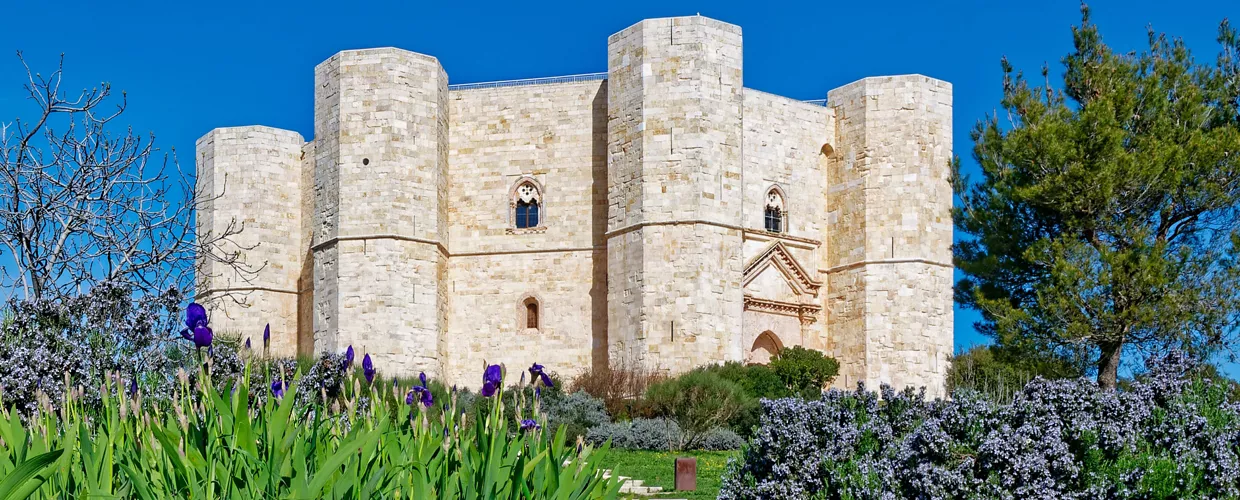This content was automatically translated. View the original text.


Overview
The stone outline of Castel del Monte appears on the horizon, enigmatic and fascinating, and can already be seen from many kilometres away: from the top of a hill in the hinterland of Andria, it dominates the entire landscape that runs from the Murge to the Tavoliere. Tradition says that it was designed by Frederick II of Swabia in person, blending elements of classical antiquity, Cistercian Gothic and even the Islamic Orient into a geometrically perfect architecture: an octagon punctuated by eight towers, also octagonal, placed at the corners, and centred on a courtyard that is also octagonal in plan. Around the courtyard are rooms originally decorated and covered in marble, with columns with refined capitals. The gateway, also modelled on the example of Roman triumphal arches, opens to the east, with a spectacular view of the sunrise. In short, it is not difficult to understand why Castel del Monte is a symbol of the Middle Ages and was proclaimed a UNESCO World Heritage Site as early as 1996, as well as becoming an icon of Puglia worldwide.
It is known that Castel del Monte was commissioned by Frederick II and that in around 1240 it was at an advanced stage of construction. The rest is legend or mystery, starting with the real authorship of the project. Some venture the name of the architect Riccardo da Lentini, but it cannot be ruled out that it really was designed by the sovereign. It is said that in 1250, at the death of Frederick II, it had not yet been completed, but the date of completion of the works remains unknown. And a great enigma concerns its function: a construction symbolising the emperor's political and military power or a splendid hunting lodge? In the Middle Ages, the hill of Castel del Monte was covered with dense forests, perfect for the hunting with falcons much loved by Frederick II, who even wrote a treatise on the subject.
Full price €7.00
Reduced price €2.00 (18–25 years)
Full price €7.00
Reduced price €2.00 (18–25 years)